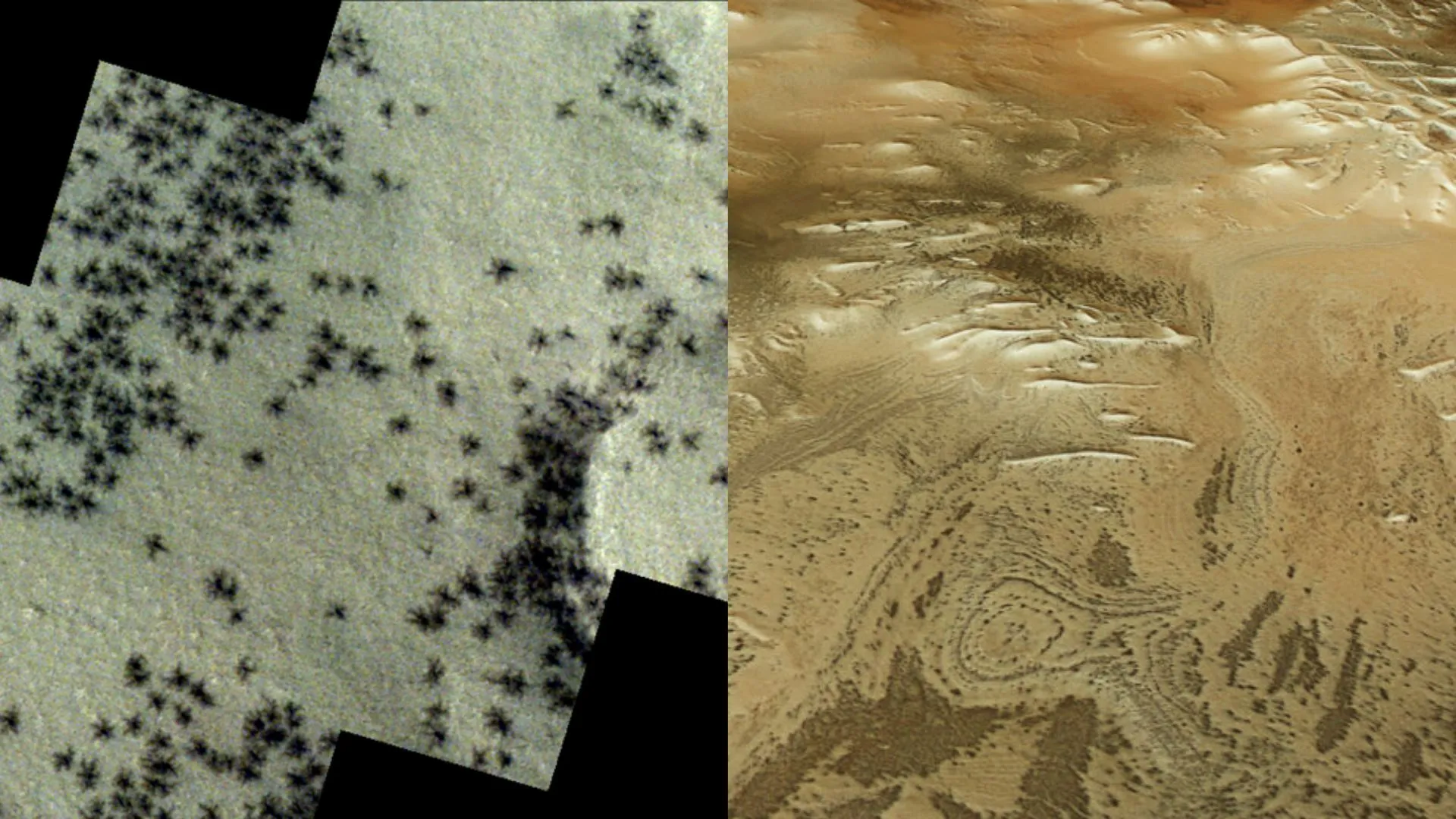Mysterious Shapes on Mars
In recent satellite photos of Mars, a remarkable discovery has been made – a series of formations that closely resemble an ancient Inca city. What makes this finding even more intriguing is the presence of hundreds of black spiders scattered throughout the area. These spider-like formations have sparked a wave of speculation and fascination among scientists and space enthusiasts alike.

Unusual Features
On Mars, peculiar dark formations appear during springtime. But these aren’t actual spiders; they’re caused by sunlight hitting layers of carbon dioxide built up over the dark winter. As the sunlight warms the carbon dioxide ice at the bottom, it turns into gas, which bursts through layers of ice above, carrying dark material to the surface.
Gas Geysers and Dark Spots
This escaping gas, carrying dark dust, shoots up through cracks in the ice-like fountains before settling back down, leaving behind dark spots ranging from 45 meters to 1 kilometer across. This same process also creates spider-shaped patterns beneath the ice, indicating the presence of these strange formations.
Observations by Spacecraft
The ExoMars Trace Gas Orbiter (TGO) has captured clear images of these patterns, resembling tendrils or webs. These spider formations, captured by TGO, lie near the area shown in a new image from the Mars Express spacecraft. The Mars Express image reveals dark spots on the surface formed by escaping gas and material, while the TGO perspective captures the web-like channels carved into the ice below.
Exploring Mars’s Landscape
These dark spots are scattered across hills and plateaus, with many visible near a region nicknamed Inca City due to its geometric ridges resembling Inca ruins. Inca City, formally known as Angustus Labyrinthus, was discovered in 1972 and remains a mystery. Its ridges may be dunes turned to stone or features related to glaciers.
Theories on Formation
The circular walls of Inca City, tracing an 86-kilometer diameter, suggest it sits within a large crater formed by an impact. The landscape also features round swirls and mounds formed by erosion over time. The mission continues to study Mars’s surface, atmosphere, and environment, shedding light on our planetary neighbor.
Conclusion
The discovery of the ‘Inca City’ and the spider-like formations on Mars has ignited curiosity and speculation about the mysteries of our neighboring planet. While the true nature and origin of these formations are yet to be fully understood, they serve as a reminder of the vastness and complexity of the universe we inhabit. The exploration of Mars continues to captivate our imagination and push the boundaries of scientific knowledge, bringing us one step closer to unlocking the secrets of our cosmic neighborhood.























































2 thoughts on “Mysterious Shapes on Mars: The Mystery of the Spiders”